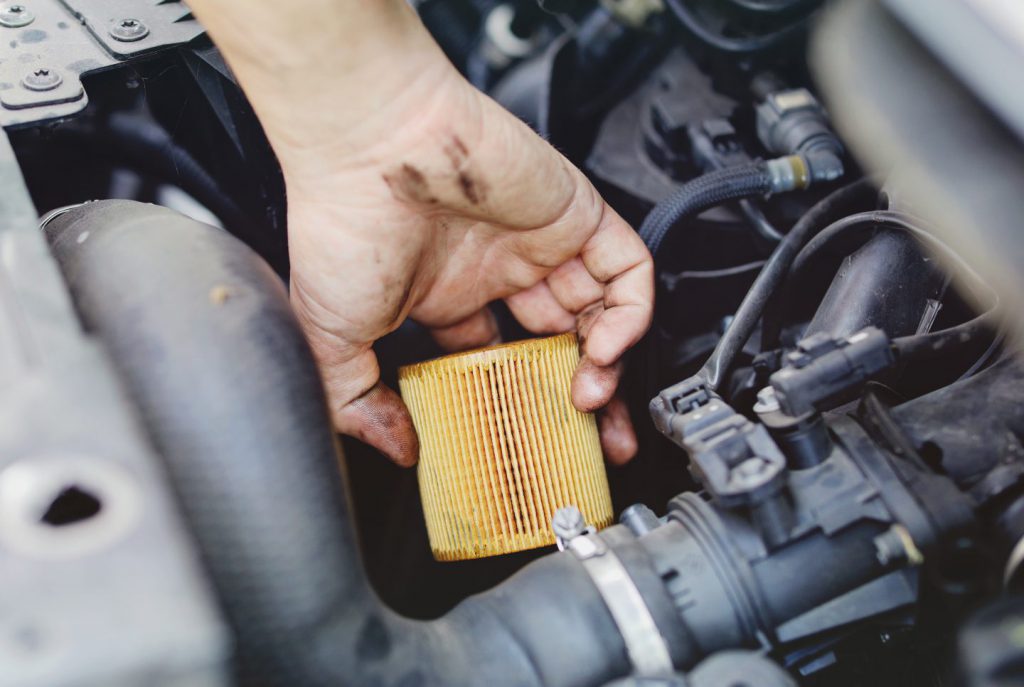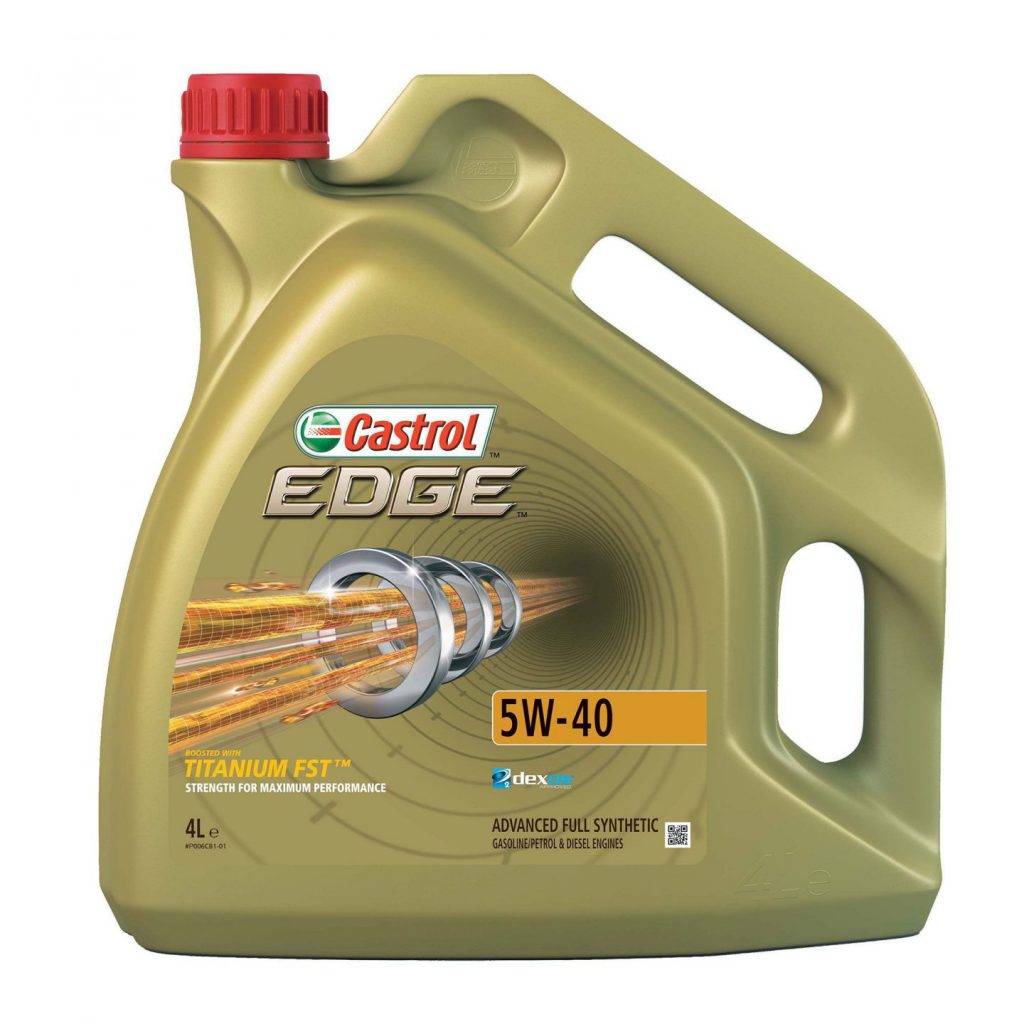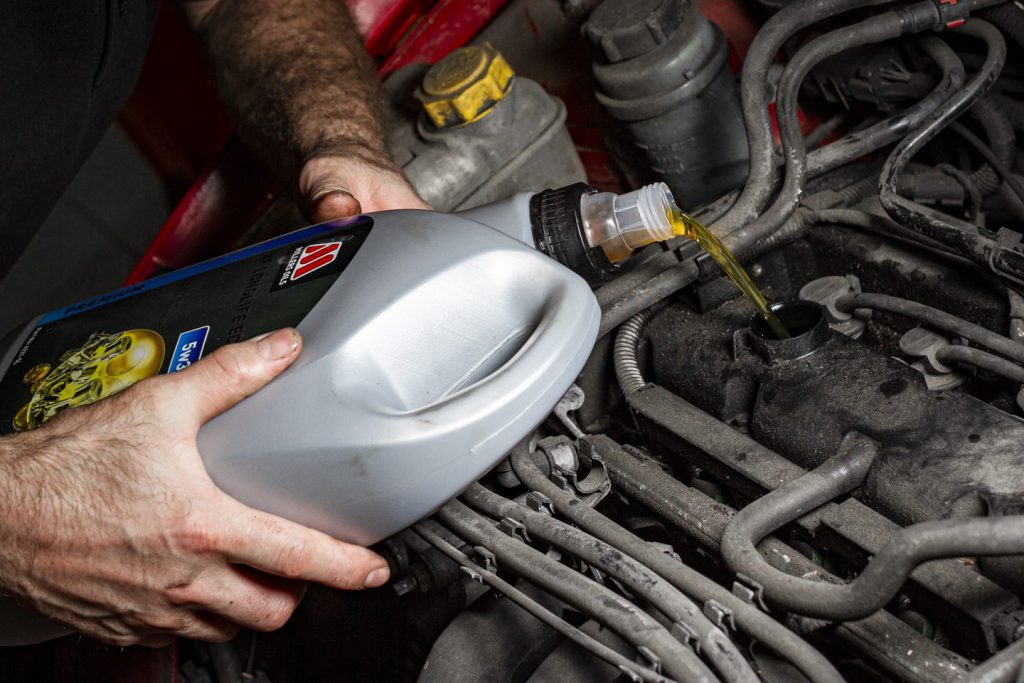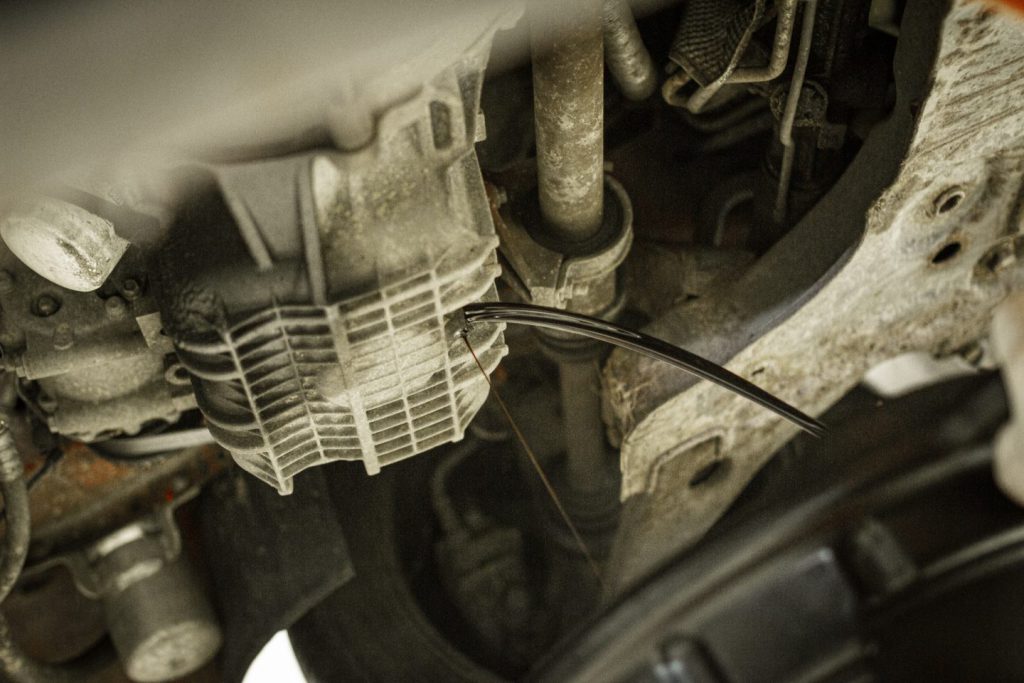
There are a lot of different fluids and lubricants that help to get a car running – and operating smoothly – but engine oil is without a doubt one of the most important. If you want a bad analogy, it’s like the blood pumping around your heart. Without oil, your engine isn’t going to work.
Throughout this guide we’re going to cover some of the most important facts about the different types of engine oils including how to identify which oil is right for your car and – perhaps crucially, how and when to go about changing your oil. We’ll also answer some of the most common questions relating to engine oils to help you gain a thorough understanding of just what makes oil such a vital fluid. So, without further ado, let’s get going.
What makes oil so important?
Inside an engine you have a lot of moving parts all of which need to be moving properly for your car to go anywhere. When you look at how fast some of these parts have to move, you will start to have some sympathy for your engines need for the right oil. Turbos can spin at over 200,000 times per minute. The valves in some engines open and close 66 times a second. Oil plays the vital role of lubricating these components and more. It provides a slippery layer between metal parts that lets them glide, rather than scrape, over each other.
In addition to its key role as a lubricant, oil also helps to circulate heat that builds up inside the engine. As parts move, they generate friction and the heat this creates can cause components to melt or distort, which you don’t want to happen. In some high-performance engines, oil is squirted onto the moving parts of the engine to cool it down. As the oil makes its way around the engine it cools the warmer areas and carries the excess heat away to an oil cooler which works similarly to a radiator.

Oil also helps to keep the engine and associated parts clean. Engine oil picks up soot, sludge and other debris that may have gathered inside the engine and delivers it to the oil filter preventing it from going any further and causing potential damage inside the engine. Without it even the smallest of particles could work their way into the inner workings, slowly grinding the moving parts down damaging the engine. Most oils also now contain chemicals that help clean the insides of the engine and prevent corrosion. This means putting fresh oil in your engine is actively working to keep it clean and in good condition.
What oil does my car need?

Different engines require different engine oils to operate at their full potential which means, unfortunately, you can’t just pour any engine oil you find into it.
Your engine will require a specific thickness of oil to function well. This depends a lot on how small the spaces between the moving parts in the engine are. As modern manufacturing techniques have gotten ever more precise, and as engines have been designed around lower and lower friction, oils have gotten steadily thinner.
This can also depend on the type of engine – high performance engines may require thicker oils to protect them at high temperature and under heavy load, although even things like the latest BMW M cars now use relatively thin oils.
The temperature the engine is operating under can also play a part. On some vehicles, the manufacturer will recommend a range of oils depending on what temperatures the engine is going to operate under.
We normally recommend consulting both your vehicles handbook, and an oil manufacturer’s online catalogue.
The handbook is an easy recommendation to make – the people that made the engine will know what oil it needs.
An online guide is a good supplement though, as sometimes problems with some oils can come to light years after the vehicle was manufactured, and the manufacturer’s recommendation may change.
What do the numbers on oil mean?
When you go to buy an engine oil for your car you’ll see all kinds of different makes like Mobil 1, Castrol, Millers Oils, MOTUL and Silkolene plus a whole host of different oils with all kinds of codes on them involving numbers and letters.
All engine oils are categorised by their viscosity (how easily the oil flows). These are the number or numbers on the oil. This is the “grade” or “weight” of the oil. These refer to how well the oil flows at a specific temperature.
Once upon a time, oils tended to be single grade. These oils have a single specified thickness. They don’t tend to be specified much for road cars anymore. We do stock a good range of these, but they’re mainly used for classic or period competition cars and unlikely to be what your car will require.
Oils used in road cars tend to be “Multi-Grade” oils. These work over a much wider range of temperatures than monograde oils.
They tend to have two different numbers separated by the letter ‘W’, such as 5W-30.
The “W” stands for “winter”, with the number preceding it referring to the flow rate when cold (i.e. when starting up in the winter.) These numbers mean that the oil still flows at specified temperatures. The lower the number, the colder the temperature the oil still flows at.
The number that follows the letter W refers to how the oil then flows when the engine (and oil) is warm.
This refers to how well the oil flows at the operating temperature of an engine. The higher the number after the W, the thicker the oil is. Thinner oils will flow better, but there may be good reasons for using a thicker oil. A thicker oil can protect an engine better, and many high-performance engines specify relatively heavy oils. We would generally follow the manufacturer’s recommendations on this one.
Increasingly on modern oils, you may see another single letter and single number next to the grade of the oil – “C1 5w30” for example.
This will be the oils “ACEA” (European Automobile Manufacturers Association) rating. This is a set of specifications that define how much “SAPS” (or Sulphated Ash, Phosphorus, and Sulphur) it produces when burned. This is important because this stuff is bad for Diesel Particulate Filters. Many modern diesel engines will want an oil that has reduced SAPS content. Less isn’t always better with this. We’d recommend following the manufacturer and oil manufacturer’s guidelines.
You may also see manufacturer standards on the oil. These typically look something like this: “VW 504.00/507.00”. These won’t be in the title of the oil but will be on the description on the web page (or on the label if you’re buying it in person) for the oil.
Fully-Synthetic or Semi-Synthetic?
Once upon a time, all oil was organic mineral oil. This was refined from the stuff that comes out of the ground. This did the job but had quite a short lifespan. If you ever hear people talking about changing their oil every 3000 miles, this advice dates back to before synthetic oils were so common. They tended to be more likely to burn, and certainly were not as clean as synthetic oils.
Synthetic oil compounds on the other hand are made using more complicated processes. Because they are synthetic, the manufacturer has a lot more control over how it performs right down to the molecular level. The benefit of this is oils with much longer lifespans, that work over a much wider temperature range, are now possible.
Depending on what blend of components are used in an oil, it may be sold as fully- or semi-synthetic. You will probably find that oils with lower “W” grades tend to be fully-synthetic, as this type of oil lends itself better to working at low temperatures.
Thicker oils (15W-40 for example) will contain a blend of both. The manufacturer will have carefully blended some mineral oil with some synthetic oil to get a mix that does what is required.
This difference in W performance will probably mean that once you’ve selected an oil of the recommended weight, you’re not actually having to choose between the two. Many modern engines will want an oil sold as “fully-synthetic” simply because the recommended oil is 0W30 or 5W30.
If you do have a choice, a fully synthetic oil will probably last longer, and perform better.
Modern Semi-synthetic oils are certainly not bad though and contain synthetic oils as part of their blend, giving them most of the advantages of fully-synthetic oils. We’d also note that these terms aren’t industry defined standards.
Does the brand of the oil matter?
Any quality brand of oil that meets all the required standards should be fine.
While you may see cheaper brands of oil than those we offer, and they should (probably) meet any standards they say on the label, a surprising amount of research and development goes into engine oil.
Additive packages in oil are increasingly high-tech. These protect your engine from cold starts, clean it as you drive, and increase the lifespan of the oil. A better engine oil will have a better additive package, which will do a better job of all of that. That will equate to your engine having a longer, and happier life.
Remember, oil is always cheap compared to an engine rebuild.
How often should I top-up or change my car’s oil?
Checking your engine oil should be part of your motoring routine. Before any long journey you should always check on your tyres, fuel, water and oils but – at the very least – you should be checking on your engine oil at least every few weeks.
This is a fairly simple and quick process, and should be performed when the car is parked on level ground. If you do this when the engine has had time to cool fully, you’ll get the most accurate reading, but most of the oil will have run out of the engine about ten minutes after it’s been turned off. As long as you bear in mind the actual level may be a little higher than what is shown on the dipstick, it’s fine to do it this way.
If your car has a dipstick, you simply remove the dipstick, clean it off, re-insert it and then pull it out again and look at the reading. If your car doesn’t have a dipstick, you’re reliant on the sensor reading.
Checking the colour of the oil under the filler cap is also a good idea. You’re looking for the colour and consistency of the oil. Oil that suddenly looks like a cappuccino can be a sign of imminent engine problems, as can an engine suddenly burning oil.
As for how often you should change your oil, the simplest approach is to follow the manufacturers service schedule. Changing the oil more often certainly won’t hurt though. Some modern engines specify very long service intervals, and as the car ages, you may wish to shorten these. This is a personal preference, and very much up to you though.
It’s important to properly change the oil, even if you’re topping it up between changes as the engine uses oil. As the oil is cleaning the engine, that means the oil and filter collect tiny particles of metal and sludge which you want out of your engine.
Do I need to visit my manufacturer/dealer for an oil change?
The short answer is no, you don’t need to visit a dealership for an oil change.
Under EU legislation, the manufacturer cannot require you to have the car serviced at the dealership for manufacturer’s own warranty. They can however, require you to have the car serviced according to a schedule, with approved parts, and be able to prove that you have had it done, which will mean a stamp in the book from a garage.
Things get a little bit more complicated if you have a car on lease or finance, or an extended warranty.
Your car finance contract on a PCP or lease car will probably include something about a “Guaranteed Final Value” (or GFV). This is what the finance company estimate the car will be worth at the end of your lease. You may have to have the car serviced at the dealership in order for them to honour this figure. The reasoning is that a Full Manufacturer Service History contributes to the value of the car.
This is very important if you’re not planning on keeping the car at the end of the finance period. You should carefully check what your agreement says.
Similarly, if you have an extended warranty, it’s worth carefully checking to see what that says about servicing. While a third-party warranty is unlikely to say anything about this, an extended warranty on an approved used car from a main dealer might.
Some additional warranties manufacturers offer (anti-corrosion or hybrid/electric battery) may also specify that you have the car serviced or checked by the dealer, so that’s probably worth checking too.
Other than the above, there’s no particular reason to go to a dealer for routine servicing. Any good garage should be able to do an oil change, or if you have the tools, room, and confidence you could quite happily do it yourself.
If you are ever in doubt, contact the company the vehicle was purchased from or read the agreement fine print.
How to change oil in your car

Changing the oil in your car is actually a fairly straightforward job once you know what you’re doing, and provided that you have the right equipment!
We’d recommend having the following tools, but this is by no means a definitive list:
- An Oil-Pan
- Oil-Filter Removal Tool
- Fluid Extractor
- Funnel
- Trolley Jack & Axle Stands
- Wheel Chocks
- Socket Sets
- Sump Plug Key
- Inspection Lamp
- Key Set for removing under trays
The step-by-step we’ve written below is supposed to be a very rough guide. Not all cars are the same, and things like the position of the oil filter are going to vary from car to car. You might find yourself having to remove undertrays, engine covers, or even the wheel.
Changing oil is easier if the oil isn’t stone cold, as it flows better. Letting the engine idle for a couple of minutes or taking the vehicle for a short drive helps.
As you need to make sure you’re getting the right amount of oil in the vehicle, flat ground is important.
As with anything you’re doing under your car, if you are having to lift the car up and get underneath, it needs to be secure.
We’d recommend putting it in first gear (or Park if an automatic) with the handbrake on. You definitely do not want it to roll anywhere. Knowing which wheels your gearbox and handbrake are connected to will be helpful at this point.
Put chocks behind the back wheels to keep them in place.
Jack up the front of the car, using jack points. Secure the front axle on stands. You should never rely on a jack alone.
If you have enough axle stands, raising and securing the rear axle as well will help. This will mean the sump is level which will help get all the oil out.
You want to position your drain pan under the sump plug before you start undoing anything. Once the oil starts coming out, it will come out quickly, so it’s best to be prepared.

You first want to “crack off” (break the initial tension) on the sump plug. Once this is done, slowly loosen by hand. Once it’s out, the oil should be pouring out quite quickly. You’ll probably need to give it a couple of minutes to drain fully.
While it’s doing that you can move onto the oil filter. Depending on the type and location you may need a special oil filter removal tool.
There are two types of oil filters. Some cars take a complete unit, others take a replaceable element. If it’s a whole filter, you will want to put a small amount of oil around the seal. If it’s a replaceable element, replacing the O-ring and putting a bit of oil around that is good practice. Where possible, prefilling the filter with oil will help ensure oil gets around the engine quicker on initial start-up.

Carefully mount the new filter. Be careful not to overtighten it. Only tightening to manufacturer specs is the way to go.
By this point, all of the oil should have come out of the sump. Double check it’s stopping coming out of the car.
Clean the thread of the sump off and install either the original sump plug or a new one. We’d recommend a new plug in most cases, and definitely a new washer/seal.
Get yourself and the oil drain pan out from under the car and carefully lower it to the ground.
Once it’s flat on the ground, you can start filling it with oil. It pays to do this slowly, with checks in between pouring to make sure you’re not overfilling. In most cases, not all of the oil will have come out of the car so you should also bear this in mind.
Once you’ve got the oil between the min and max fill levels, run the engine for about 30 seconds to circulate oil around the engine. Now re-check the level and fill more oil as required.
Don’t forget to responsibly dispose of the waste oil as per your local councils’ guidelines.
Enjoyed this? Read more of our latest news:
- Comparing All-Season & Summer Tyres
- The Best Summer Tyres
- Lowering Springs, Kits or Coilovers – What’s right for me?
Where To Next?
Looking for the latest performance & tuning parts? Check out our wide range from top brands.
Come and visit us at our store, showroom and fitting centre in Wrexham.
Want to know more about our story? Learn about who we are and why we’ve been driven by passion for over 50 years.
Interested in everything we do? Catch up on all the latest Demon Tweeks news.
